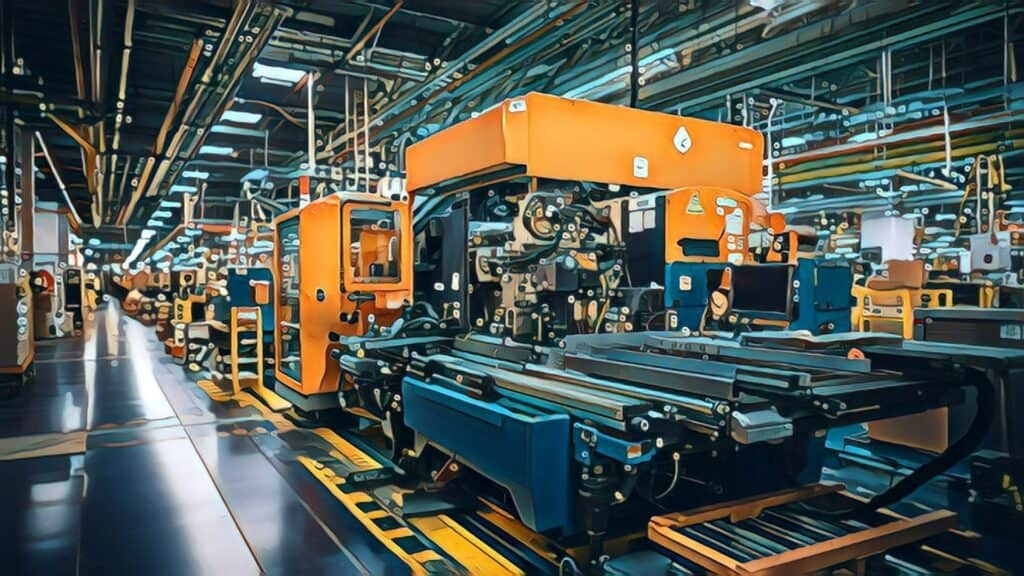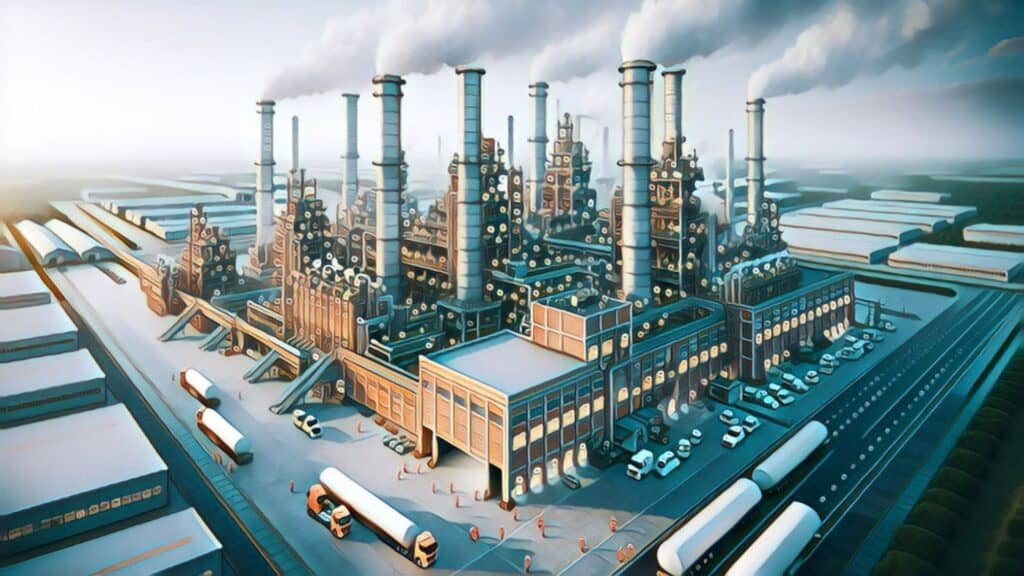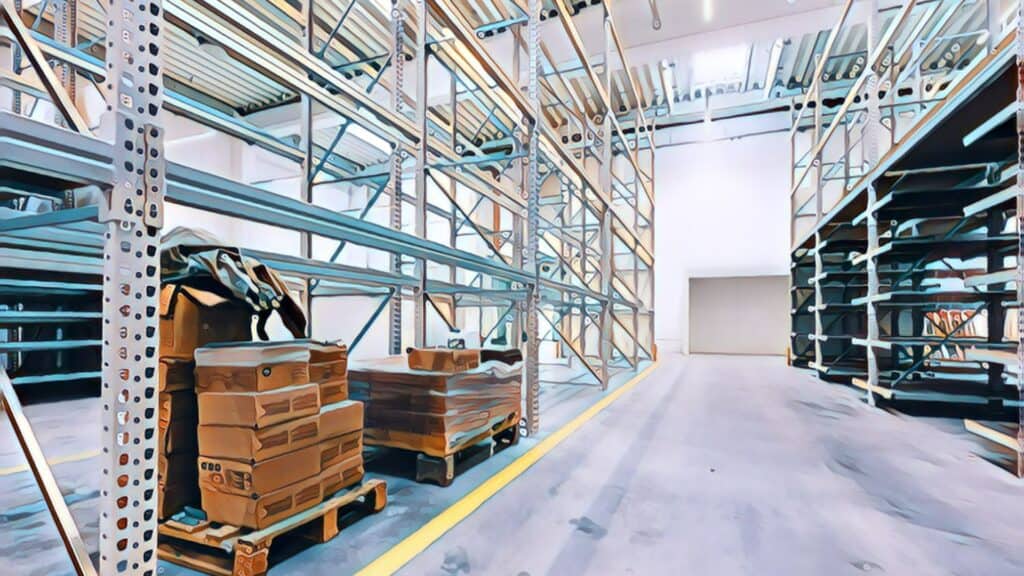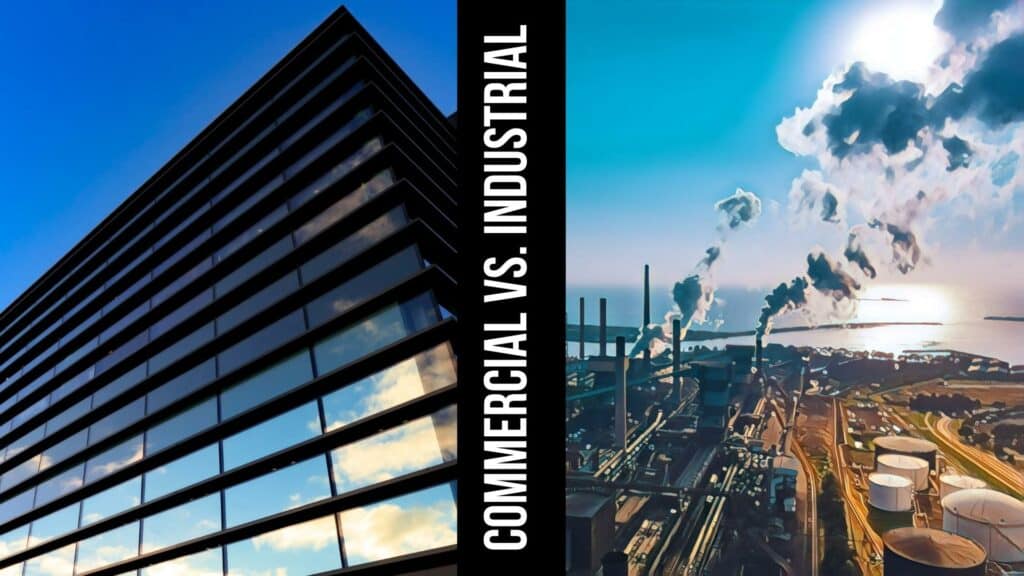LISTEN TO THIS ARTICLE
Key Takeaways:
Diverse Income Opportunities: Both commercial and industrial real estate investments offer various income opportunities. Commercial properties, such as office buildings and shopping centers, provide stable cash flows through long-term leases, while industrial properties can offer predictability through leasing to manufacturing and logistics companies.
Tax Benefits and Considerations: Understanding the tax benefits and considerations for commercial and industrial real estate is crucial. Commercial properties often benefit from lower property taxes due to triple net leases, while industrial properties can have higher taxes due to specialized infrastructure.
Return on Investment (ROI) and Risk Assessment: ROI varies based on the type of property and location. Commercial real estate in urban areas tends to provide returns of 8% to 10% per year, while industrial real estate can yield higher returns of 10% to 12% per year.
Unveiling Wealth Potentials (Navigating the Difference Between Commercial and Industrial Properties for Optimal Passive Income)
On your quest for the best passive income solution, though it may appear daunting, real estate investing can be a rewarding, lucrative, and great way to reach your desired cash flow when approached strategically.
Most Lucrative Strategy (Commercial vs. Industrial Real Estate Investing) is all about understanding how to make the best decision for your investment strategy while maximizing your returns and minimizing risk through investment property.
From tax breaks and cash flow opportunities, to flex space and short-term rental options, there are a variety of ways you can enhance your investment portfolio while benefitting from these two investment classes.
Join us as we explore these potentials in-depth, unlocking wealth with commercial and industrial real estate investing.

What is commercial real estate?
Commercial real estate represents a sector of real estate where land and buildings are utilized for business ventures, enveloping a range of establishments from office edifices and retail outlets to apartment blocks and hotels.
This property type is where the industrial real estate world intersects as industrial and commercial are both considered commercial real estate.
This expands the domain to include industrial businesses housed in types of buildings like warehouses, all aimed at creating a workplace conducive to the myriad operations a business that operates within them undertakes.

Commercial Real Estate Fun Fact
The quest for architectural supremacy in the form of towering skyscrapers was palpably felt during the late 1920s in New York City.
This era, often referred to as the “Skyline Race,” was characterized by fierce competition among architects and developers to push the boundaries of construction, reaching for the sky to house the burgeoning commercial and industrial businesses of the time.
The Chrysler Building, which emerged as a significant player in this race, claimed the title of the world’s tallest building upon its completion on May 27, 1930.
However, its reign was short-lived, as the completion of the Empire State Building on April 11, 1931, surpassed it, setting a new pinnacle in the skyline.
The narrative of the Chrysler Building’s ascent reveals a tale of secrets, rivalries, and a relentless ambition to build the tallest tower—a reflection of not just architectural but also commercial real estate aspirations of that epoch.
This competition wasn’t merely an architectural endeavor; it was a manifestation of the booming commercial real estate sector during the early 20th century.
The Chrysler Building held its title for just 11 months before being eclipsed by the Empire State Building, which stood at 1,250 feet, marking a significant milestone in the first skyscraper building boom of the 1920s-30s, a time when commercial real estate began reaching new heights—literally and metaphorically.
—
RELATED CONTENT
Sources: Commercial Cafe, Town & Country, Smart History, Khan Academy

The venture into commercial real estate often demands a heftier financial commitment compared to its residential counterpart, primarily due to the larger scale of property used for commercial activities, and the myriad of regulations that govern them.
The investment landscape here is broad, covering properties used for a variety, from single-tenant or multiple-tenant operations in industrial buildings to single-family homes within multi-unit dwellings.
The essence of commercial real estate is to leverage land intended to generate profit, whether it’s used in and for businesses like retail stores or industrial operations, each bearing its unique set of regulations and financial prerequisites.

What is industrial real estate?
Is commercial real estate dead compared to industrial?
Industrial real estate encompasses properties primarily utilized for manufacturing, production, warehousing, distribution, and research and development activities.
This sector includes a variety of building types such as factories, warehouse buildings, and research facilities, all designed with specific features to cater to the needs of the industrial operations they house.
Diving into the world of real estate introduces one to a spectrum of property types, each with its distinctive allure and functionality.
In this case, commercial vs. industrial.
On one hand, industrial real estate embodies land and buildings primarily engrossed in manufacturing, production, warehousing, and the bustling activities of distribution research and development.
This category encapsulates factory or warehouse buildings, each structured uniquely to resonate with the demands of the industries they cradle.
For instance, warehouse buildings are often adorned with loading docks and expansive storage realms, while the manufacturing plants boast specialized equipment nested within a robust infrastructure.
On the flip side, commercial real estate refers to buildings or land intended to churn a profit through rental income or capital gain.
This domain is a colorful palette of commercial property types including office properties, retail property arenas like malls, multifamily havens like condominiums and duplexes, and others nestled under the retail umbrella.
Unlike the industrial counterpart, commercial real estate often leases to businesses that occupy the property for a variety of purposes ranging from offering services to other businesses to retail sales.
The commercial and industrial zoning codes play a pivotal role in dictating how a property is used and for what business endeavors it can be utilized, marking a clear line in the industrial vs commercial debate.
A stroll through a city’s outskirts might reveal industrial land bustling with industrial companies, distinctive structures used for business purposes, distanced from residential buildings due to commercial law stipulations.

In contrast, commercial and industrial properties in the heart of the city, near residential areas, house businesses, and residential and commercial units, portray a blend of commercial and industrial synergy.
The zoning includes codes for commercial and industrial properties, ensuring they align with the intended use, be it single-tenant or multiple-tenant operations.
The difference between industrial and commercial is further pronounced when examining the types of construction associated with businesses.
Industries are both considered vital cogs in the real estate building sphere, each catering to a different facet of the economy.
The range of industrial properties today varies widely, from garages and distribution centers to a vast array of other industrial property types.
The commercial and industrial properties often harbor single-family homes, and residential and commercial units, aiding in creating a mesh of opportunities for those looking to buy or sell.
Each property type, whether under the industrial and retail or commercial cap, is zoned uniquely, providing a playground for a plethora of business activities.
Understanding the nuances between commercial zoning and industrial, and how each property is zoned and used for business, can help you make an informed decision when venturing into the real estate market.
Whether it’s a retail space in a bustling mall or an industrial land marked for production, each has its place in the grand tapestry of real estate investment strategies, awaiting the savvy investor to unlock its potential.

Tax Benefits
When it comes to real estate investing, there are key differences in the tax benefits of commercial buildings and industrial buildings.
Commercial real estate properties such as retail stores, apartment buildings, and office spaces are usually leased to business owners for commercial purposes.
Commercial leases often use triple net leases, which means that the tenant is responsible for property taxes, property insurance, and maintenance costs.
Because of this, commercial real estate property owners typically have lower property taxes and higher cap rates, which refers to the net income generated from a property relative to the purchase price.
Additionally, commercial leases often have long-term leases, resulting in lower risk and more stable income for the property owner.
On the other hand, industrial property, including industrial warehouses, storage facilities, and manufacturing plants, is used for industrial activities such as manufacturing, production, and storage.
Industrial real estate investments are typically in high demand due to the growth of online shopping and the industrial sector.
Because of this, the rental income generated from industrial space can be greater than that of residential space, resulting in higher market value and potential tenants.
Unlike commercial leases, industrial leases can have long leases, which result in a more stable income for the property owner.
Industrial real estate taxes can be higher than commercial properties due to the high costs associated with an industrial investment, such as heavy-duty infrastructure and specialized equipment.

| Property Type | Location | Average Annual ROI | Characteristics |
|---|---|---|---|
| Commercial Real Estate | Urban | 8% to 10% | Steady cash flow, potentially lower risk |
| Industrial Real Estate | Varied | 10% to 12% | Potentially higher returns, may involve higher risk |
Income Opportunities (Maximizing Real Estate Profits)
Commercial real estate investing and industrial real estate investing both offer various income opportunities.
In commercial real estate investing, income streams can be generated through various sources such as rent, appreciation, and lease contracts.
Commercial properties such as office buildings, shopping centers, and hotels, can provide stable cash flows as long-term leases with tenants, often with escalations built in over the lease term, create a steady income stream.
As the property value increases over time, investors can profit from appreciation.
Industrial real estate investing can provide a different kind of opportunity, primarily through long-term leasing with manufacturing and logistics companies.
These leases often provide stable and predictable rental income, which can provide a solid return on investment.
Industrial real estate investing can provide significant opportunities for capital appreciation as supply chain and manufacturing logistics evolve and change.

Flex Space
Flex space refers to a type of commercial property that offers flexible and adaptable layouts suitable for various business purposes.
This type of property has become increasingly popular in recent years, particularly in the commercial real estate sector.
The main categories of properties in the commercial real estate sector are office, retail, and industrial real estate.
For example, an office building that has been converted into a warehouse for storage purposes or a large manufacturing facility that has been adapted for retail use during off hours (think Amazon).
Flex spaces offer investors flexibility in how they choose to use their assets while still allowing them access to potential revenue streams from renting out portions of the space when necessary.

Restaurants
Another great example of flex spaces is restaurants, which are prime examples of lucrative commercial real estate investments, due to their tendency to attract repeat customers.
These businesses require specific locations that offer necessary utilities such as water; this can be achieved through well-designed urban developments with mixed-use properties located close enough together for convenience yet far enough away so as not to interfere with one another’s foot traffic.

Recreation
For many investors who are actively thinking outside of the box, recreational activities like golf courses have become increasingly popular among property owners who want exposure without taking on too much risk – after all, no one wants their tee times interrupted by construction crews.
Similarly, amusement parks have seen renewed interest recently thanks largely due toward new technology being developed around virtual reality experiences; think Disneyland but without needing someone actually walking around inside it pushing buttons.

Industrial-Specific Flex Space
In the industrial real estate sector, flex space includes warehouses, distribution centers, and manufacturing facilities.
Industry experts predict that industrial real estate will continue to be in high demand due to the growth of e-commerce and the need for more distribution centers.
One of the great reasons why flex space is attractive to online retailers is their need for storage and distribution space, which has increased the demand for industrial real estate, particularly in urban areas where some online retailers need to be close to their customers to greatly reduce shipping and customer service times.
To further showcase the benefits of Industrial flex space, many tenants typically require larger spaces for production or storage.
This makes flex space even more of an ideal choice for tenants who need a space that can be adapted to their specific requirements.
For example, a warehouse space that can be divided into smaller units for storage, or a manufacturing facility that can be reconfigured to accommodate different production lines.

Short-Term Rental (AirBNB/Peerspace)
Over the years, AirBNB has created a stir in the hospitality sector by offering travelers an alternative to traditional hotel chains, giving investors the chance to capitalize on short-term rental markets where zoning regulations are either lax or nonexistent.
Nevertheless, this avenue comes with certain risks as landlords may be subject to expensive repairs if renters do not exercise due diligence when it comes to looking after their property.
Although commercial real estate is typically used by businesses for office, retail, or industrial purposes, recent years have shown us that some investors and property owners have found another use for commercial space: short-term rentals.
There are multiple ways in which commercial real estate can be utilized for short-term rentals, depending on the property type and location.
The first step to utilizing commercial real estate for a short-term rental is finding the right property.
While any type of commercial property could potentially be used for short-term rental purposes, some are better suited than others.
For example, an office space might not be ideal for AirBNB, while a retail or industrial space that’s been converted into a loft-style apartment could be perfect.
If very large spaces are needed, platforms like Peerspace make it easy to utilize unused or converted industrial space for public or private events like weddings, business conferences, music concerts, expos, etc.
The potential value of the property is also a crucial factor to consider. Investors should analyze the property value and rental potential of the space to determine if the investment is worth it.
Interest rates, real estate market conditions, and the square footage of the space will also impact investment decisions.
Individual investors or real estate investment trusts (REITs) can invest in commercial property and turn it into rental properties for AirBNB.
One way to do this is to convert commercial space into a residential or mixed-use property.
A storefront can be transformed into a cozy studio apartment, while an industrial warehouse can be converted into a trendy loft-style living space.
Another way to use commercial real estate for short-term rental is to lease the space to commercial tenants who can then sublet it as their own short-term rental.
This method is especially popular for single-tenant properties that are too large for the current tenant’s needs. The new tenant can then rent out the unused portion of the space.
Investors can also purchase a piece of land and build a commercial property specifically designed for AirBNB.
They could build a hotel or a mixed-use building with a hotel component, which could generate higher rental income per square foot.
When considering short-term rental usage of your property, keep in mind that insurance is a crucial factor in safeguarding against potential liabilities associated with owning or managing any kind of asset, especially those that are related to public safety such as recreational facilities.
It is important to thoroughly research and obtain the proper insurance plan before taking on any kind of asset, particularly those associated with public safety such as recreational facilities which usually require more coverage than a typical property.
Insurance premiums can vary greatly depending on the type of plan chosen; thus, having an appropriate insurance policy in place should ensure that operations continue unimpeded even if disaster strikes unexpectedly.

Net Operating Income (NOI)
Net Operating Income (NOI) is a key performance indicator for both commercial and industrial real estate investments.
NOI measures the profitability of a property by calculating the total income generated from the property minus operating expenses.
Typically, a higher NOI indicates a more profitable investment.
When comparing commercial real estate and industrial real estate, there are differences in typical NOI percentages due to the unique characteristics of these property types.
In general, commercial real estate has higher NOI percentages compared to industrial real estate.
This is because commercial property investment usually generates higher rental income per square foot than industrial property investment.
With usual types of properties falling under the commercial real estate category being office buildings, retail centers, and hotels, these properties typically have a mix of tenants and generate income through rent, parking fees, and other sources.
On the other hand, properties including warehouses, manufacturing plants, and distribution centers, industrial properties are generally less profitable due to lower rental income per square foot.
These properties have fewer tenants and are more specialized in their use.
Industrial properties generate income through rent and other sources like utilities or transportation fees, which are comparatively fewer income opportunities than commercial properties.
The typical NOI percentages for commercial real estate can range from 5% to 10%, depending on the type of property and location.
In contrast, the typical NOI percentages for industrial real estate are usually lower, ranging from 3% to 8%.
Overall, the NOI of commercial and industrial real estate investments can be affected by a variety of factors such as the local real estate market, tenant mix, lease terms, and property location.
It is important for investors to carefully consider these factors when making investment decisions and to work with experienced professionals in the commercial and industrial real estate sector.
| Parameter | Commercial Real Estate | Industrial Real Estate |
|---|---|---|
| Definition of NOI (Net Operating Income) | NOI measures the profitability of a property by calculating the total income generated from the property minus operating expenses. | Same as Commercial Real Estate |
| Typical Properties | Office Buildings, Retail Centers, Hotels | Warehouses, Manufacturing Plants, Distribution Centers |
| Income Sources | Rent, Parking Fees, and other sources | Rent, Utilities, Transportation Fees, and other sources |
| Tenant Variety | Mixed variety of tenants | Fewer tenants, more specialized in use |
| Rental Income Per Square Foot | Typically higher | Typically lower |
| Typical NOI Percentages | Ranges from 5% to 10% | Ranges from 3% to 8% |
| Factors Affecting NOI | Local real estate market, tenant mix, lease terms, property location | Same as Commercial Real Estate |
| Investment Considerations | Advised to work with experienced professionals in the commercial and industrial real estate sector to make informed decisions | Same as Commercial Real Estate |

Industrial Real Estate Fun Fact
For much of the last seven decades, Chicago has been the largest industrial real estate market.
A notable surge happened between 1991 and 2000 when a whopping 165 million square feet of space was added to the market.
Chicago’s reign as a powerhouse in the industrial real estate landscape showcases the city’s long-standing relationship with industry and commerce.
The largest inventory growth in Chicago’s industrial real estate occurred between 1991 and 2000, marking a significant decade of expansion.
During this time, this impressive additional square footage reflected the city’s robust industrial growth.
It’s projected that Chicago will continue to expand its industrial real estate portfolio by adding another 57 million square feet of space from 2020 to the end of 2023.
This enduring expansion underscores Chicago’s pivotal role in the industrial real estate sector, both historically and looking ahead.
—
Source: Commercial Search

Return On Investment (ROI)
When it comes to commercial and industrial real estate investing, both types of investments have the potential to provide net positive cash flow and generational wealth for investors.
Typical return on investment percentages for commercial real estate investments vary based on the type of property and location.
Commercial properties in urban areas tend to generate higher returns than those in rural areas.
On average, commercial real estate investors can expect a return on investment of around 8% to 10% per year.
However, some properties can provide returns as high as 15% to 20% per year.
Industrial real estate investments have the potential to be the most lucrative for investors due to their high cash flow potential.
These types of properties tend to have longer lease terms, which means they can provide steady rental income for a longer period.
As a result, the typical return on investment for industrial properties is around 10% to 12% per year.
Some industrial properties can provide returns as high as 15% to 20% per year.
When comparing commercial investments to industrial investments, the best option for investors depends on their goals and risk tolerance.
For investors who are looking for steady cash flow and long-term rental income, industrial real estate may be the most promising option.
On the other hand, investors who are willing to take on more risk and have more capital to invest may find commercial real estate to have the most potential for high returns.
| Factors | Commercial Real Estate | Industrial Real Estate |
|---|---|---|
| Location Preference | Urban areas | Varied locations |
| Average ROI per Year | 8% to 10% | 10% to 12% |
| High ROI Potential | Up to 15% to 20% | Up to 15% to 20% |
| Lease Terms | Varies | Longer lease terms |
| Cash Flow Stability | Varies | Steady rental income |
| Investor Preference | More capital, higher risk | Steady cash flow, long-term income |

Insurance
Having insurance coverage is a must for any real estate investor, as it provides a safeguard against potential losses and helps maintain the desired cash flow.
Not only does it protect the investor from unexpected losses due to damage or liability claims, but it also helps ensure that cash flow projections remain on track.
Without insurance, investing in real estate is akin to taking a risk without any protection against potential losses.
Real estate investors who deal in commercial properties have different insurance requirements than those who invest in industrial real estate.
Since commercial real estate typically includes properties such as office buildings, retail spaces, and mixed-use properties, these properties may have a high risk of liability claims due to the amount of foot traffic they receive.
As a result, commercial real estate investors may need to purchase liability insurance policies that cover general liability, professional liability, and employment practices liability.
They may also need property insurance to protect the building structure and its contents, such as furniture and equipment.
Industrial real estate, on the other hand, encompasses properties that are used for manufacturing, warehousing, and distribution.
These properties may have higher risk factors than commercial real estate, such as exposure to hazardous materials, machinery, and heavy equipment.
As a result, industrial real estate investors may require specialized insurance policies that cover environmental and pollution liability, product liability, and machinery breakdown.
They may also need business interruption insurance to defeat potential financial ruin by covering any losses that may result from unexpected shutdowns or disruptions (eg: pandemic) in the manufacturing or distribution process.
When investing in these two asset classes, be aware that both commercial and industrial real estate investors must carefully evaluate the risks associated with their properties and choose insurance policies that provide the proper level of tailored protection.

Conclusion
Both commercial and industrial real estate investing can be profitable if approached strategically, creating generational benefits.
Understanding the differences between the two as well as the specific benefits, regulations, and requirements involved in each, is key to your success.
While commercial real estate may offer more cash flow opportunities and tax breaks, industrial real estate may provide higher yields due to its specialized nature.
Ultimately, as an investor, you must carefully evaluate your goals and risk tolerance to determine which type of real estate investment is right for you.
With the right approach, investing in commercial or industrial real estate can lead to unlocking significant wealth and financial freedom.
With the right knowledge, you can experience tremendous potential for your future!



























